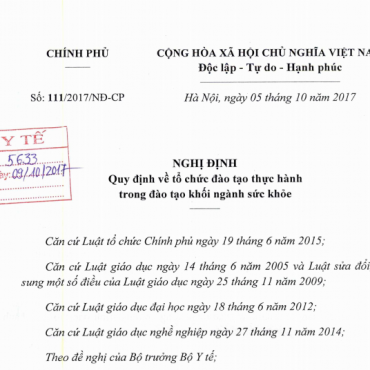Contact Admission
International Collaboration
Spike Antibody Levels of Nursing Home Residents With or Without Prior COVID-19 3 Weeks After a Single BNT162b2 Vaccine Dose
Spike Antibody Levels of Nursing Home Residents With or Without Prior COVID-19 3 Weeks After a Single BNT162b2 Vaccine Dose
Hubert Blain, MD, PhD1; Edouard Tuaillon, MD, PhD2; Lucie Gamon3; et alAmandine Pisoni2; Stephanie Miot, MD, PhD1; Marie-Christine Picot, MD, PhD3; Jean Bousquet, MD, PhD4
JAMA. 2021;325(18):1898-1899. doi:10.1001/jama.2021.6042
Recent studies have suggested that, to reach immunity, immunocompetent SARS-CoV-2 seropositive adults may only require 1 dose rather than 2 doses of a messenger RNA vaccine1,2; however, these studies did not include older adults. Older adults living in nursing homes are at higher risk for severe COVID-19, and the immune response to the vaccine may differ from that of younger, healthier adults.
We compared IgG antibody levels after a single dose of BNT162b2 (Pfizer-BioNTech) vaccine in nursing home residents with or without prior COVID-19.
Methods
Between March and June 2020, we studied residents from nursing homes in Montpellier, France, facing a COVID-19 outbreak.3 As soon as a resident developed COVID-19, the testing recommendations from the European Geriatric Medicine Society were followed4 in that all residents were repeatedly tested using reverse transcriptase–polymerase chain reaction (RT-PCR) on nasopharyngeal swabs until no new cases were diagnosed. Participants provided written informed consent and the study was approved by the Montpellier University hospital institutional review board.
Six weeks after the end of the outbreak, all residents underwent blood testing for levels of IgG antibody against the SARS-CoV-2 nucleocapsid (N) protein.3 All residents from 6 nursing homes were offered a first vaccine dose in January 2021. Three weeks later, all residents underwent blood testing to quantitatively assess IgG antibody levels against the SARS-CoV-2 spike (S) protein and N protein. Levels of IgG antibody against the SARS-CoV-2 receptor-binding domain were quantified using the SARS-CoV-2 IgG II Quant assay (Abbott Diagnostics). The results were expressed as arbitrary units (AU) per milliliter (positive threshold: 50 AU/mL; upper limit: 40 000 AU/mL). The IgG antibodies against the SARS-CoV-2 N protein were detected using the SARS-CoV-2 IgG assay (Abbott Diagnostics). The results were expressed as the signal to cutoff ratio (Abbott Alinity; Abbott Diagnostics) (positive threshold: 0.8 signal to cutoff ratio).
In residents with or without a prior history of COVID-19, we compared IgG antibody levels against SARS-CoV-2 proteins S and N by using 2-sided Wilcoxon Mann-Whitney tests. The statistical significance threshold was set at 5%. Analyses were performed using SAS Enterprise Guide version 7.3 (SAS Institute Inc).
Results
Of the 102 residents, 60 had no prior SARS-CoV-2 infection (COVID-19), 36 had a positive RT-PCR result and were seropositive for SARS-CoV-2 N-protein IgG in June 2020, and 6 had a positive RT-PCR result or were seropositive for SARS-CoV-2 N-protein IgG. Of the 36 residents who had a positive RT-PCR result and were seropositive for SARS-CoV-2 N-protein IgG in June 2020, 26 remained seropositive in January-February 2021 (72.2%).
All 36 residents with prior COVID-19 were seropositive for S-protein IgG after 1 vaccine dose vs 29 of 60 residents (49.2%) without prior COVID-19. Among residents with prior COVID-19, the median level of S-protein IgG was 40 000 AU/mL or greater (interquartile range [IQR], 22 801-≥40 000 AU/mL) vs 48.0 AU/mL (IQR, 14.0-278.0 AU/mL) in those without prior COVID-19 (P < .001; Table).
One resident with a positive RT-PCR result in April 2020 tested seronegative for N-protein IgG in June 2020 and January 2021; the resident had a robust S-protein IgG level (≥40 000 AU/mL). Five residents were found to be seropositive for N-protein IgG in June 2020 while having repeated negative RT-PCR results in April 2020. All 5 of these residents had high levels of S-protein IgG antibody (median, ≥40 000 AU/mL; IQR, ≥40 000-≥40 000 AU/mL). Among the 6 residents with a positive RT-PCR result or who were seropositive for N-protein IgG, the levels of S-protein IgG antibody were significantly higher than among the 60 without prior COVID-19 (P < .001) and were not statistically significantly different from the 36 who had a positive RT-PCR result and were seropositive for N-protein IgG (P = .26; Figure).
Discussion
This preliminary study suggests that a single dose of BNT162b2 vaccine may be sufficient to obtain a high level of S-protein IgG antibody in nursing home residents previously diagnosed with COVID-19 based on RT-PCR results. This is in line with results based on IgG to spike trimer and neutralization antibody titers reported among health care workers with prior COVID-19 (diagnosed using SARS-CoV-2 IgG).2
Measuring S-protein IgG antibody levels just before the second vaccine dose could be useful in determining whether a second dose is required in individuals whose infection history is unknown. This could limit possible adverse effects related to reactogenicity in previously infected patients and spare precious vaccine doses. Limitations of the study include the small sample size, with possible lack of representativeness, and the lack of neutralization assays.
Section Editor: Jody W. Zylke, MD, Deputy Editor.
Article Information
Corresponding Author: Hubert Blain, MD, PhD, Pôle de Gérontologie, CHU de Montpellier, 39 Avenue Charles Flahault, 34295 Montpellier Cedex 5, France (h-blain@chu-montpellier.fr).
Accepted for Publication: April 2, 2021.
Published Online: April 15, 2021. doi:10.1001/jama.2021.6042
Author Contributions: Dr Blain had full access to all of the data in the study and takes responsibility for the integrity of the data and the accuracy of the data analysis.
Concept and design: Blain, Tuaillon, Miot.
Acquisition, analysis, or interpretation of data: Blain, Tuaillon, Gamon, Pisoni, Picot, Bousquet.
Drafting of the manuscript: Blain, Tuaillon.
Critical revision of the manuscript for important intellectual content: All authors.
Statistical analysis: Gamon, Pisoni, Picot.
Administrative, technical, or material support: Blain, Tuaillon, Pisoni.
Supervision: Blain, Tuaillon, Bousquet.
Conflict of Interest Disclosures: None reported.
Additional Contributions: We thank Anna Bedbrook and Fabienne Portejoie (Department of Dermatology and Allergy, Universitätsmedizin, Berlin), Eva Pons (Master Métiers de l’Enseignement, de l’Education et de la Formation, Éducation Nationale Française, Lyon), and Samuel Alizon, PhD (Montpellier University), for editorial assistance. We also thank Joy Martin (Department of Geriatrics, Montpellier University Hospital and Secours Infirmiers) and Véronique Vera and Florence Biblocque (Montpellier University Hospital admission office) for material support. None of these contributors received any compensation for their help in carrying out the study. In addition, we thank the residents and staff members of the nursing homes involved in the study.
References
1.Wise J. Covid-19: people who have had infection might only need one dose of mRNA vaccine. BMJ. 2021;372(n308):n308. doi:10.1136/bmj.n308PubMedGoogle ScholarCrossref
2.Saadat S, Tehrani ZR, Logue J, et al. Binding and neutralization antibody titers after a single vaccine dose in health care workers previously infected with SARS-CoV-2. JAMA. Published online March 1, 2021.doi:10.1001/jama.2021.3341
ArticlePubMedGoogle Scholar
3.Blain H, Gamon L, Tuaillon E, et al. Atypical symptoms, SARS-CoV-2 test results and immunisation rates in 456 residents from eight nursing homes facing a COVID-19 outbreak. Age Ageing. Published online February 23, 2021. doi:10.1093/ageing/afab050Google Scholar
4.Blain H, Rolland Y, Schols JMGA, et al. August 2020 interim EuGMS guidance to prepare European long-term care facilities for COVID-19. Eur Geriatr Med. 2020;11(6):899-913. doi:10.1007/s41999-020-00405-zPubMedGoogle ScholarCrossref
Source:https://jamanetwork.com/journals/jama/fullarticle/2778926?guestAccessKey=78f7f775-a5ef-495e-9ac1-b4fbb39d0e53&utm_source=silverchair&utm_medium=email&utm_campaign=article_alert-jama&utm_content=etoc&utm_term=051121
Other library
- One in 10 People Who Had Omicron Got Long COVID: Study ( 20:25 - 01/06/2023 )
- Physical Medicine Academy Issues Guidance on Long COVID Neurologic Symptoms ( 09:58 - 19/05/2023 )
- Breakthrough' Study: Diabetes Drug Helps Prevent Long COVID ( 08:55 - 15/03/2023 )
- BCG vaccine (thuốc chủng ngừa bệnh lao) & SARS-CoV 2 (covid-19) infection ( 10:08 - 27/10/2022 )
- Đại dịch COVID-19 đã kết thúc? ( 09:11 - 22/09/2022 )
- Dị hình giới tính ở COVID-19: Ý nghĩa tiềm năng về lâm sàng và sức khỏe cộng đồng ( 09:22 - 19/03/2022 )
- COVID-19 Update ( 21:00 - 06/03/2022 )
- Một người có thể tái mắc Covid-19 bao nhiêu lần ?? / kèm 6 tài liệu mới ... do "waning immunity", xảy ra ≥6 tháng sau chủng ngừa hay mắc nhiễm .. ( 20:25 - 06/03/2022 )
- T-cells from common colds can provide protection against COVID-19 - study ( 08:25 - 11/01/2022 )
- Coronavirus Can Spread to Heart, Brain Days After Infection ( 07:56 - 30/12/2021 )
















